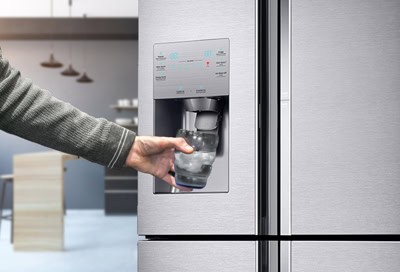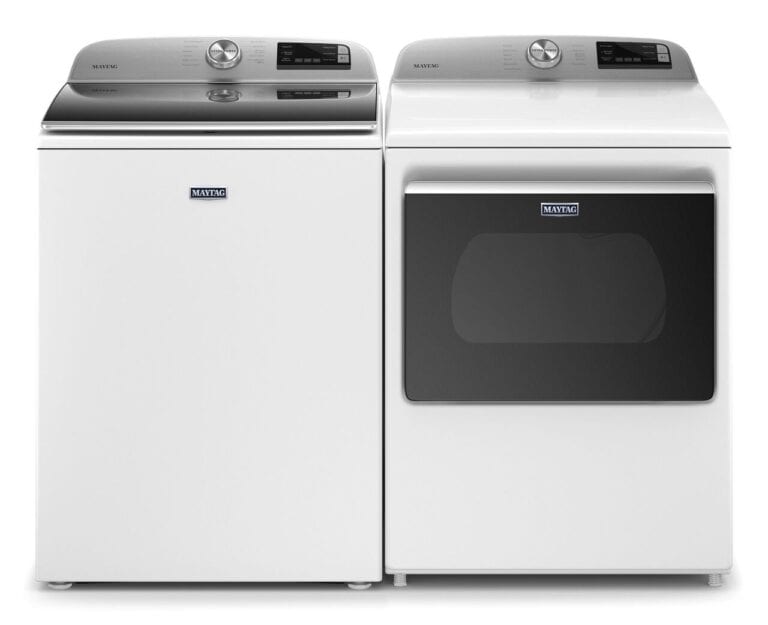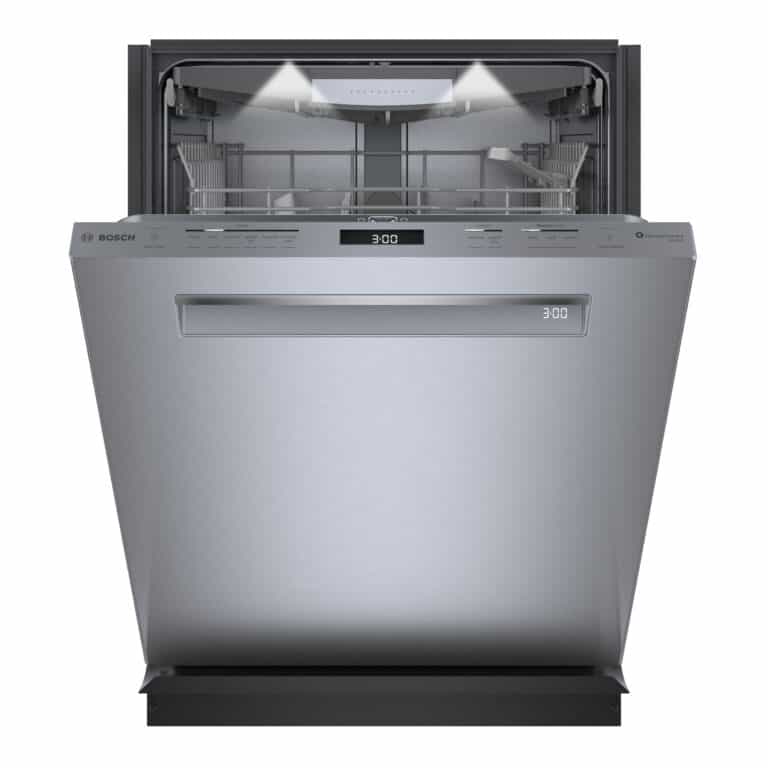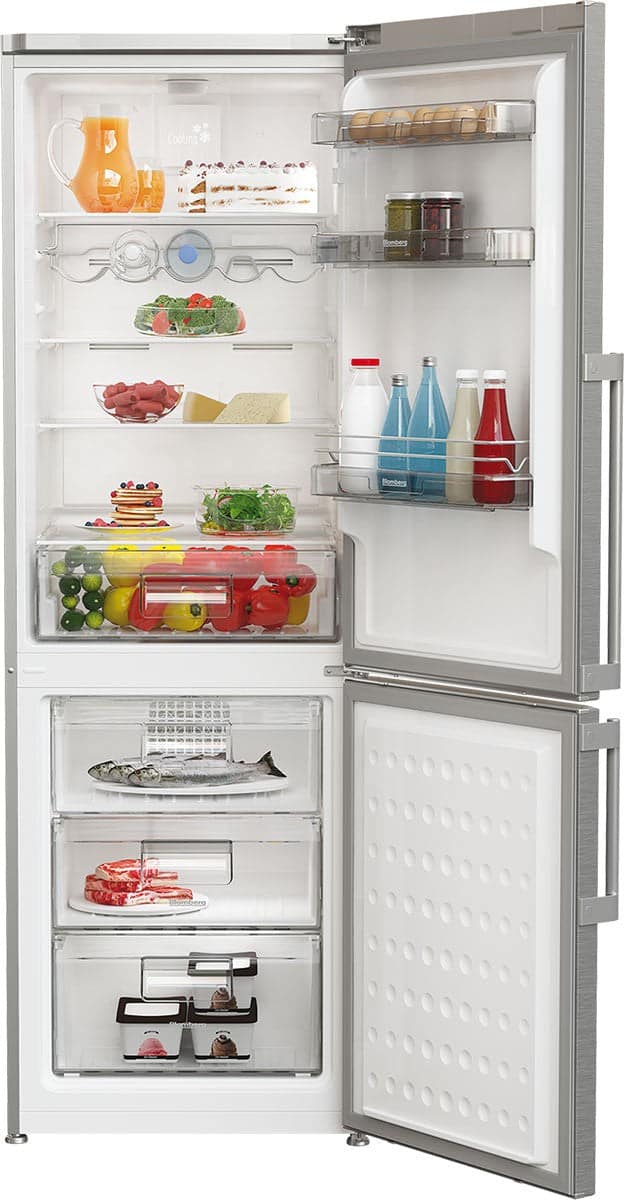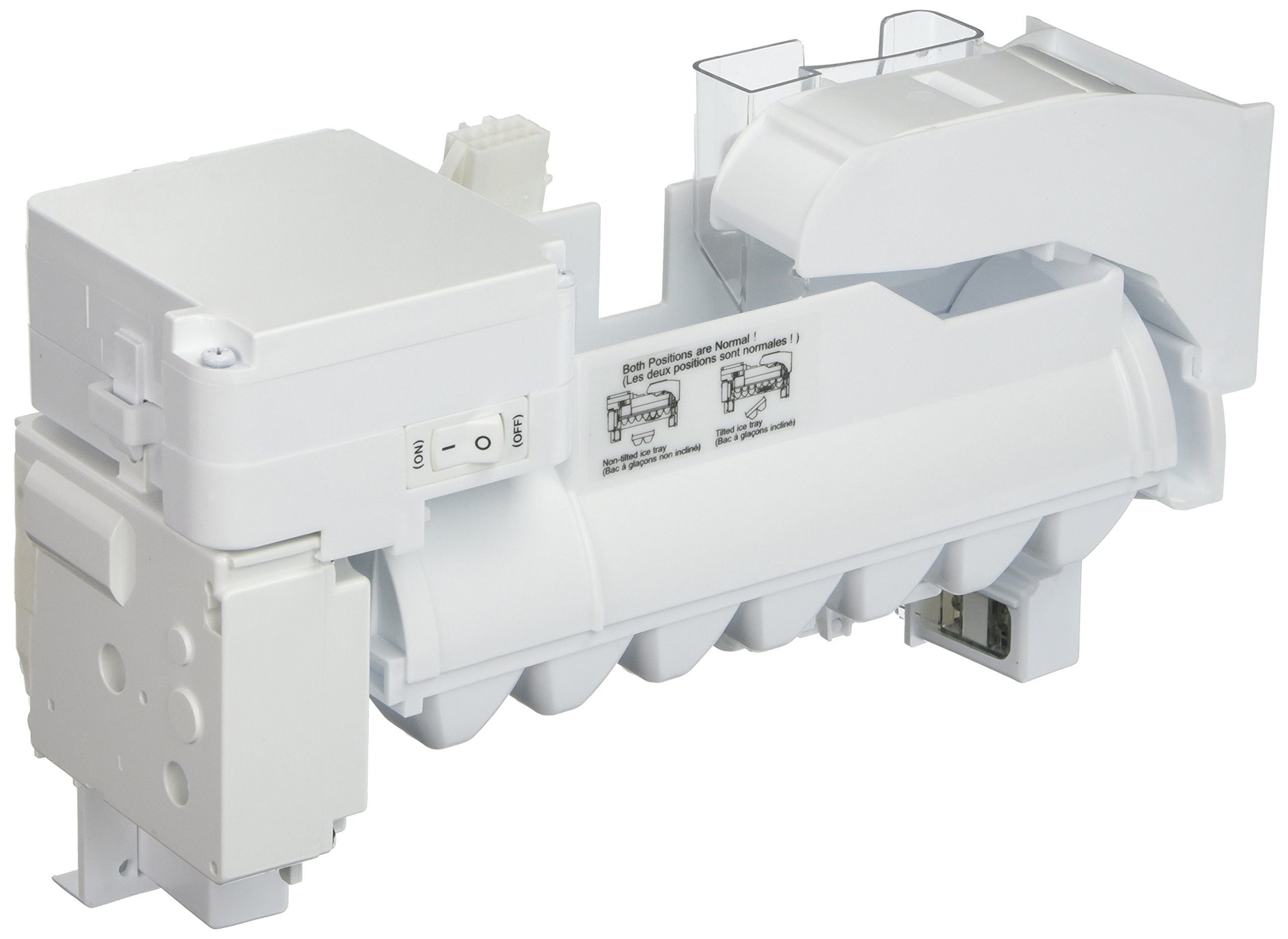
Is your LG refrigerator not producing ice when you need it most? Many homeowners face this frustrating issue with their LG ice makers. You can often fix your LG ice maker by checking for ice blockages, resetting the system, or ensuring proper water supply and temperature settings. These simple troubleshooting steps can save you from calling a repair technician and get your ice production back on track.
Problems with LG ice makers typically stem from a few common issues. Sometimes ice gets stuck under the tray, preventing it from functioning properly. Other times, the water supply might be interrupted or the freezer temperature isn’t cold enough. Understanding these basic problems helps you tackle them effectively and restore your ice maker’s performance.
1. Check the Basics First
- Power switch: Make sure the ice maker is turned ON (some models have a small switch or lever).
- Water supply: Confirm the water line is connected, the valve is open, and there are no kinks in the hose.
- Freezer temperature: The freezer should be set between 0°F and 5°F (-18°C to -15°C). Warmer temps prevent ice production (source: LG).
2. Reset the Ice Maker
Most LG ice makers have a reset/test button:
- Pull the ice bucket out.
- Locate the small reset button on the underside or side of the ice maker.
- Press and hold it for about 3–5 seconds until you hear a chime or the ice tray moves.
- Wait 24 hours to see if ice production resumes.
3. Inspect for Common Issues
- Frozen water line: If the line is iced over, thaw it with a hair dryer (low heat) or by unplugging the fridge for a few hours.
- Clogged water filter: Replace the water filter if it’s older than 6 months—a clogged filter restricts water flow.
- Ice jams: Remove any stuck cubes from the tray or dispenser.
4. Test the Water Inlet Valve
- If no water reaches the ice maker, the water inlet valve may be faulty.
- This requires a multimeter to check for continuity. If defective, replace it.
5. Replace the Ice Maker Assembly (if needed)
If resetting, thawing, and checking the valve don’t work, the ice maker module itself may be defective.
- Replacement is often DIY‑friendly: unplug the fridge, remove screws and wiring harness, swap in a new unit, and reconnect (guide: LG Ice Maker Replacement 2025).
6. When to Call a Technician
- If you’ve tried all the above and still no ice.
- If you find electrical issues or leaks.
- If your fridge is still under warranty—repairs may be covered.
✅ Pro Tip: Run regular maintenance—replace the water filter every 6 months, keep the freezer at the right temperature, and avoid overloading the ice bin.
Key Takeaways
- Check for ice blockages under the tray and use a hairdryer to melt any obstructions if necessary.
- Ensure your LG refrigerator’s freezer temperature is cold enough and the ice maker is switched on.
- When basic troubleshooting fails, consider a replacement part or professional repair for your ice maker.
Understanding Your LG Ice Maker
LG refrigerators come with built-in ice makers designed to provide a steady supply of ice. These systems include several key components that work together to create ice cubes.
The ice compartment houses the entire ice making system and maintains the proper freezing temperature. This area needs to stay at 0°F (-18°C) or below for proper ice formation.
Your LG ice maker operates through a series of automated steps. First, water flows into the ice tray molds. Then the system freezes the water and ejects the formed ice cubes into the collection bin.
A thermostat inside the ice maker monitors the temperature to ensure conditions remain ideal for ice production. If temperatures rise too high, ice making may stop until proper freezing conditions return.
The control board serves as the brain of the ice maker system. It regulates the timing of water flow, freezing cycles, and ice ejection. When troubleshooting ice maker issues, this electronic component often requires attention.
Most LG models feature an on/off switch located on the ice maker unit itself. Look for a small lever or button that can toggle the system. Some newer models allow control through the front panel display.
The refrigerator ice maker connects to your home’s water supply through a water inlet valve. This valve opens and closes to control water flow into the ice maker, ensuring proper fill levels for each ice-making cycle.
Regular maintenance helps keep your ice maker functioning properly. This includes replacing water filters every six months and occasionally cleaning the ice bin to prevent buildup.
Troubleshooting Common LG Ice Maker Issues
When your LG refrigerator stops making ice, several components might be causing the problem. Proper diagnosis and targeted fixes can often resolve these issues without requiring professional service.
Identifying Ice Maker Malfunctions
The first step in troubleshooting is confirming if your ice maker is actually turned on. Many LG refrigerators have a power switch or button that controls the ice maker function. Check that the ice maker is switched on as this is often overlooked.
Temperature settings are crucial for proper ice production. The freezer compartment should be set to -4 degrees Fahrenheit for optimal ice making. If the temperature is too warm, the unit won’t produce ice efficiently.
Look for these common signs of malfunction:
- No ice production for over 24 hours
- Partial or incomplete ice cubes
- Ice maker making unusual noises
- Control panel error codes
Use the diagnostic feature on newer LG models by pressing the Test button on the ice maker assembly. This will force a harvest cycle to help identify if the mechanical components are working correctly.
Resolving Water Inlet Problems
Water supply issues often cause ice maker failures in LG refrigerators. First, verify that the refrigerator is receiving water by checking if the water dispenser works properly.
The water inlet valve can be a common culprit. This valve controls water flow into the ice maker and may become faulty over time. Signs of a problematic valve include:
- Water leaking inside the fridge
- Incomplete ice cubes
- Ice maker tube repeatedly freezing up
Check that water pressure is adequate (minimum 20 psi). Low water pressure can prevent the valve from opening completely. Inspect the water line for kinks or freezing points that might restrict water flow.
Replace the water filter if it’s been more than six months since the last change. A clogged filter significantly reduces water flow to the ice maker.
Eliminating Ice Tray Obstructions
Ice buildup and obstructions in the ice tray can prevent proper functioning. Inspect the ice tray for frost accumulation or ice chunks that block movement.
To clear ice buildup:
- Turn off the refrigerator
- Remove the ice bucket and tray
- Thaw any ice accumulation with warm water
- Dry thoroughly before reinstalling
Check if the ice ejector arm moves freely. In many LG models, a stuck ejector arm will trigger a safety shut-off. Gently test the arm’s movement manually when the unit is powered off.
Inspect the ice level sensor for frost accumulation. This sensor tells the machine when to stop making ice, and if obstructed by frost, it may falsely signal a full ice bin.
Addressing Ice Maker Assembly Faults
When other troubleshooting steps fail, the issue might be with the ice maker assembly itself. LG refrigerator ice maker assemblies can develop mechanical or electrical failures over time.
Common signs of assembly problems include:
- Ice maker making grinding noises
- Motor running but no ice production
- Ice maker cycles on and off rapidly
Check the ice maker’s motor for proper operation. A humming sound without movement indicates motor failure. The ice maker’s circuit board may also fail, preventing operation entirely.
For persistent issues, replacing the entire ice maker assembly might be necessary. Always use OEM parts for replacement to ensure proper fit and function. The part number for your specific model can be found in the user manual or on LG’s support website.
A factory reset sometimes resolves electronic glitches. Unplug the refrigerator for 2 minutes, then restore power to reset the internal computers.
Reset and Maintenance Procedures
Proper reset procedures and regular maintenance can solve most LG ice maker issues. Following these steps will ensure your ice maker functions efficiently and produces clean ice consistently.
Resetting the LG Ice Maker
When your LG ice maker stops working, a reset might solve the problem. There are several methods to reset an LG ice maker depending on your model.
The simplest method is to flip the ice maker switch off for 5 seconds, then flip it on. For more thorough resets, locate and press the reset button on your ice maker for about 5 seconds.
Some models require cycling the feeler arm (the wire that hangs down) up and down several times to trigger a reset. This mimics the action that occurs when the ice bin is full.
For LG Craft Ice makers, first check the control settings on your LG fridge display panel to ensure ice making is enabled before attempting a reset.
Cleaning the Ice Maker
Regular cleaning prevents contamination and ensures proper operation. Begin by turning off the ice maker and emptying the bin completely.
Remove the ice maker tray carefully and wash it with mild dish soap and warm water. Never use harsh chemicals that might contaminate future ice batches.
Check the fill tube behind the ice maker. If it’s frozen, use a hairdryer on low heat to carefully thaw it out. This tube delivers water to the ice maker and can become frozen, blocking water flow.
Wipe down interior surfaces with a soft cloth dampened with a solution of equal parts water and vinegar. This helps eliminate odors and sanitize the ice maker components.
Regular Maintenance Tips
Inspect water filters every 6 months and replace as needed. A clogged filter reduces water flow to the ice maker, resulting in smaller ice cubes or no ice production.
Check water pressure to your refrigerator. Low pressure causes slow ice production. The recommended water pressure for most LG refrigerators is between 20-120 psi.
Monthly maintenance checklist:
- Inspect and clean the water inlet valve
- Check for ice buildup around the fill tube
- Clean the ice bin with warm soapy water
- Verify the ice maker is level for proper operation
If the ice maker produces odd-shaped or small cubes, check the water line for kinks or partial freezing. Straighten any kinked lines and ensure proper insulation around water lines in cold areas.
Replenishing Your LG Ice Maker when Needed
Keeping your LG ice maker functioning properly requires regular maintenance of key components. When ice production slows down or stops completely, it’s often due to issues with filters or parts that need replacement.
How to Replace the Water Filter
The water filter in your LG refrigerator directly impacts ice quality and production. Most LG models require filter replacement every six months for optimal performance.
To replace the filter, first locate it inside your refrigerator. Common locations include the upper right corner of the fresh food section or the base grille. Turn off the ice maker before starting the replacement process.
For most LG models, you’ll need to:
- Twist the old filter counterclockwise to remove it
- Remove the protective cap from the new filter
- Insert and turn clockwise until it locks in place
After installation, run water through the system for about 2-3 minutes to clear air from the lines. This helps prevent air bubbles that might affect ice production.
Some LG refrigerators display a filter indicator light. Don’t forget to reset this after replacement by pressing and holding the indicator button for 3 seconds.
Upgrading Ice Maker Components
When simple troubleshooting doesn’t solve persistent ice maker problems, replacing components might be necessary. The most commonly replaced parts include the ice maker assembly, water inlet valve, and ice bucket.
If your ice maker fails to cycle, the entire assembly might need replacement. These can be purchased from LG or authorized retailers. Before installation, disconnect power to avoid electrical hazards.
For ice buckets with damage or worn components:
- Order a replacement part matching your specific model
- Remove the old bucket completely
- Clean the housing area thoroughly
- Install the new bucket until it clicks into place
Sometimes ice gets stuck under the tray, preventing proper operation. In these cases, using a hair dryer to carefully melt obstructions can restore function without replacing parts.
Before investing in new components, consider using the reset function on your ice maker. This often resolves electronic issues without requiring replacements.
Professional Assistance and Part Replacement
When your LG ice maker stops working, you may need expert help or replacement parts. Getting professional service ensures your ice maker functions properly without causing further damage to your refrigerator.
When to Call an Appliance Technician
If your LG ice maker isn’t producing ice or is making strange noises, simple troubleshooting might not be enough. An appliance technician should be called when:
- The ice maker fails after multiple reset attempts
- You notice water leaking inside the freezer
- Ice cubes are smaller than normal or malformed
- The ice maker makes unusual sounds when operating
LG offers flat-rate repair services starting at $349 that include both parts and labor. This can be more cost-effective than multiple service visits.
For quick service, companies like Sears Home Services offer same-day or next-day repairs for LG ice makers. According to consumer experiences, professional repairs typically cost around $500 for parts and labor.
Sourcing LG OEM Parts
Using genuine LG parts ensures compatibility and optimal performance for your ice maker. When purchasing replacement parts:
Look for official LG ice maker replacement parts rather than generic alternatives. OEM parts fit perfectly and work with the refrigerator’s systems.
Complete ice maker repair kits often include:
- Ice maker assembly
- Water inlet valve
- Harness connectors
- Installation hardware
You can schedule service through the LG Support website to ensure certified technicians use genuine parts. LG’s repair service guarantees their work and uses only authentic LG components.
Frequently Asked Questions
LG refrigerator ice makers sometimes need troubleshooting to function properly. These common questions address the most frequent issues owners face when their ice makers stop working.
How can I locate and use the reset button on my LG refrigerator’s ice maker?
The reset button on most LG refrigerator ice makers is located on the ice maker unit itself. Look for a small button, often rectangular or square in shape, on the front or bottom edge of the ice maker assembly.
Press and hold this button for about 3-5 seconds until you hear a chime or see the ice maker light blink. This indicates the ice maker has been reset.
If you can’t locate the reset button, check your owner’s manual or look for a test switch that may serve the same function.
What steps are involved in resetting the ice maker in an LG refrigerator?
First, locate the reset button on the ice maker unit inside your freezer compartment. Press and hold this button for approximately 3-5 seconds.
Listen for a chime sound or watch for a light indicator to confirm the reset was successful. The ice maker should begin a new cycle within 24 hours.
If resetting doesn’t work, try turning the refrigerator off at the power source for about 30 seconds, then turn it back on to perform a full system reset.
Where can I find the on/off switch for the ice maker in my LG refrigerator?
The on/off switch for an LG refrigerator ice maker is typically located on the ice maker unit itself. Look for a small lever or sliding switch.
Some models have the switch on the side or front of the ice maker assembly. Other models may have the on/off function controlled through the display panel on the refrigerator door.
Check that the switch is in the “on” or “I” position rather than “O” or “off” position if your ice maker isn’t dispensing ice.
How can I troubleshoot an LG refrigerator’s ice maker that is not producing ice?
Check the freezer temperature first. The freezer should be set to -4°F (-20°C) for proper ice production. A temperature that’s too warm will prevent ice from forming.
Verify that the water supply line isn’t kinked or frozen and that the water valve is fully open. A restricted water flow will prevent the ice maker from filling properly.
Inspect and replace the water filter if it’s clogged, as this can restrict water flow to the ice maker. LG recommends changing filters every six months.
What are common reasons for an LG ice maker to malfunction or stop working?
Improper freezer temperature is a leading cause of ice maker failures. The freezer must maintain -4°F for efficient ice production.
Water supply issues such as low pressure, kinked lines, or a closed water valve can prevent the ice maker from filling. These water supply problems account for many ice maker failures.
A clogged water filter or mineral buildup in the water lines can restrict flow to the ice maker, requiring filter replacement or line cleaning to restore function.
What is the typical cost associated with replacing an LG refrigerator’s ice maker?
A replacement LG ice maker assembly typically costs between $100-$200 for the part itself, depending on the specific model of refrigerator.
Professional installation adds approximately $150-$300 to the total cost, bringing the complete replacement expense to about $250-$500.
DIY replacement is possible for those with technical skills, saving on labor costs, but incorrect installation may void warranty coverage or cause additional problems.

